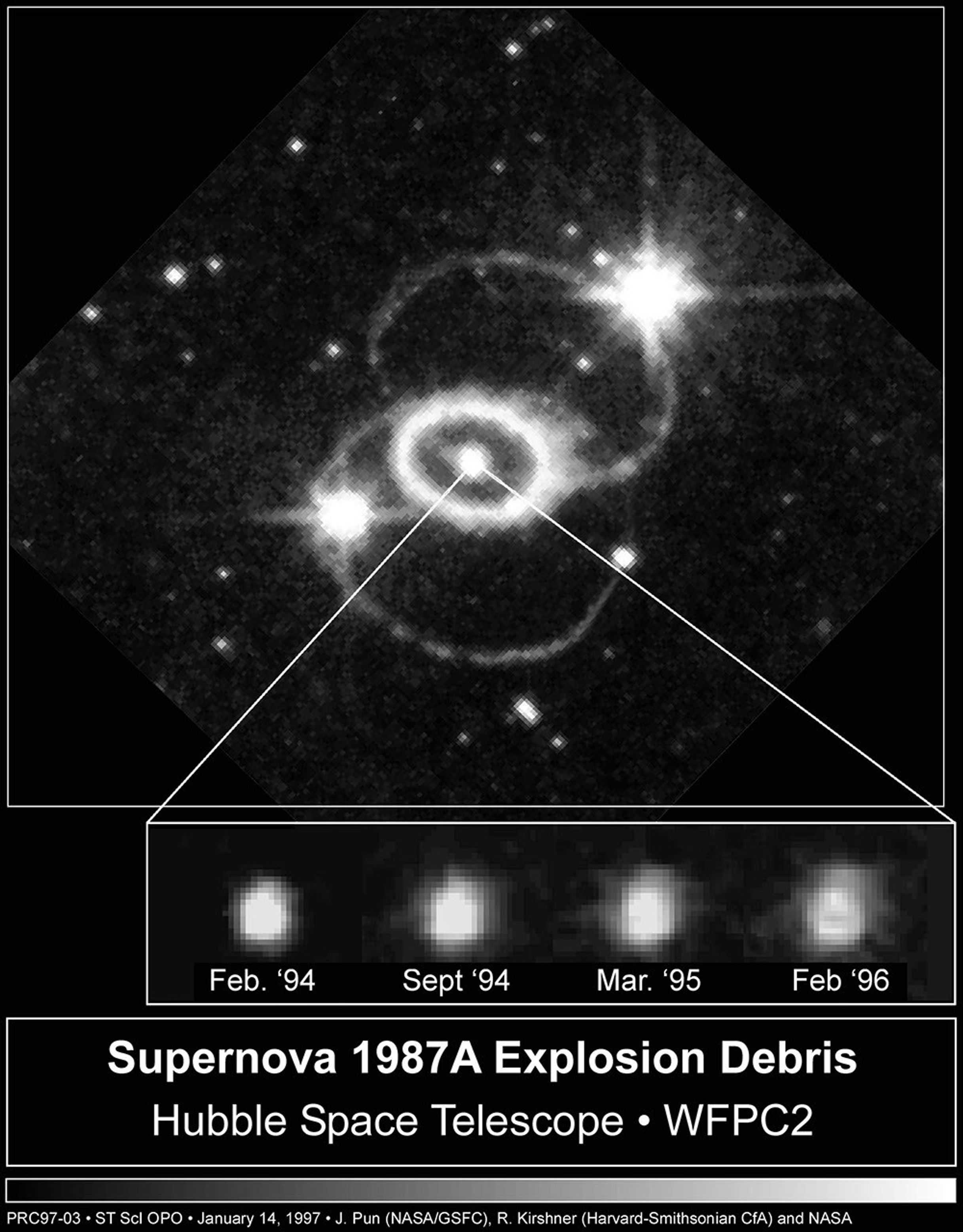Though the brightest supernova in four centuries lit up the southern sky almost exactly 10 years ago on Feb. 23, 1987, astronomers have waited a decade for the ballooning fireball to become large enough - about one-sixth of a light-year - to be resolved from Earth's orbit with NASA's Hubble Space Telescope (HST).
Astronomers announced today that a close monitoring of the supernova (designated SN1987A) with HST's sharp view has resolved a one-tenth light-year long dumbbell-shaped structure consisting of two blobs of debris expanding apart at nearly 6 million miles per hour from each other.
"This structure is a bit of a surprise," says Jason Pun of Goddard Space Flight Center, Greenbelt, Maryland. "This is the first time we can see the geometry of the explosion and relate it to the geometry of the large glowing ring system around the supernova, which has an hourglass shape. The images may yield important clues to the dynamics of the supernova explosion and the structure of the progenitor star."
Pun says the dim area between the blobs may be related to the equatorial belt of material seen around the supernova that existed before the star exploded. The ring was illuminated by the supernova in 1987 during the explosion and has been slowly fading since then.
Ever since the star self-destructed in 1987 astronomers realized that it offered a once-in-a-lifetime possibility, because of its close proximity to Earth, to obtain images of the explosion at various stages and look for any changes in the shape and dynamics.
The latest findings are the result of the Supernova Intensive Study collaboration, headed by Professor Robert Kirshner of the Harvard-Smithsonian Center for Astrophysics in Cambridge, Massachusetts. Images of SN1987A were taken in September 1994, March 1995, and February 1996 with the Wide Field and Planetary Camera 2 (WFPC2). These results are being presented today at the 189th Meeting of the American Astronomical Society in Toronto, Canada, by co-investigator Pun.
The explosion of the supernova debris appears to be perpendicular to the plane of the inner ring. This suggests that whatever properties that the pre-supernova star has, such as rotation or the existence of a companion star, that is responsible for the formation of the inner ring, may also have influenced the dynamics of the explosion.
The explosion was triggered 10 years ago when the collapse of the star's core sent a blast wave of neutrinos which heated the star's inner layers to 10 billion degrees Fahrenheit. This triggered a shockwave which then ripped the star apart and sent the debris hurtling into space. The fireball has since cooled down (to a few hundred degrees Fahrenheit) and the debris is now heated by nuclear energy from the decay of radioactive nuclei produced in the explosion.
The Space Telescope Imaging Spectrograph (STIS) and Near Infrared Camera and Multi-Object Spectrometer (NICMOS), planned for installation on Hubble this February, will be used to obtain a spatially resolved velocity map of the debris, providing information on the physical conditions of the two blobs.
The debris is expected to collide with the inner ring as early as the year 2002. This will light up all of the dark nebulosity surrounding the supernova, providing new clues to the nature and evolution of the stellar explosion.





























